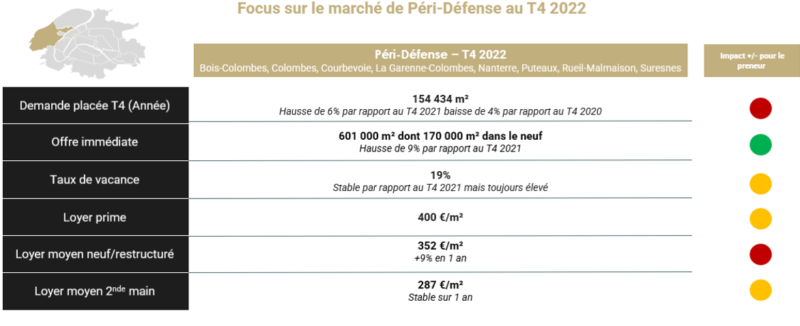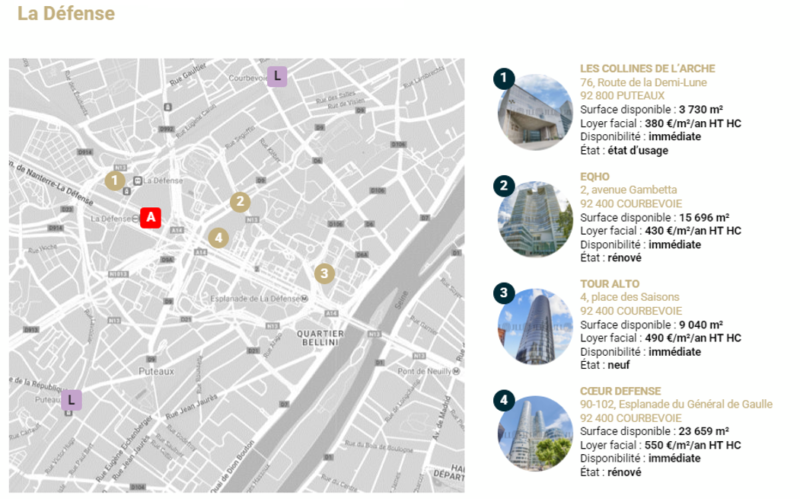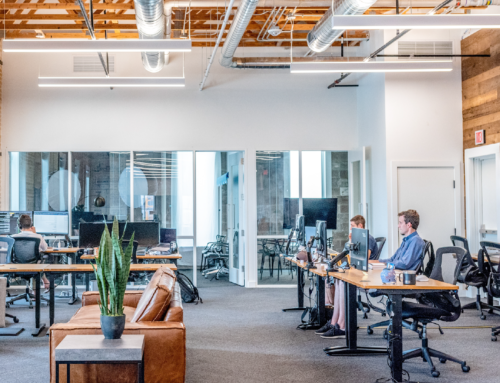Stay or move: how to choose the right real estate strategy?
Your real estate must meet your current challenges but also your future needs. It is important to think about your real estate strategy 12 to 24 months before your lease expires (three-year or end of lease), especially if the management wants to make it a participative project that involves all or part of the employees. This period can even be longer if the company is looking to acquire its headquarters or have it built.
Whether the company is considering moving or renegotiating its lease to remain on site, with the same surface area, by increasing or reducing it, it is a transactional operation that must be studied in advance.
Before conducting these various studies, there are a few things to check. Here is the advice of our Parella Real Estate Services team:
In a project, the real estate strategy phase is the opportunity to study all possible scenarios (two at least, composed of sub-scenarios). The services of a real estate consultant allow to take into account all the aspects: from the precise definition of the real needs to the specifications.
A question of timing
to maximize your opportunities
to maximize your opportunities
One of the great characteristics of the commercial lease is that it offers a framework that allows each party to rediscuss the legal and financial conditions, or to consider a move, at different times during the life of the lease. It can be a three-year window, in the case of a 3/6/9, or any other window, depending on the firm duration of the commitment.
Moreover, since the lease is a contract between two parties, it is always possible to negotiate an agreement by mutual agreement without waiting for the contractual deadlines.
Prior to any reflection, it is essential to identify the challenges and risks of your project. What about financial, talent attraction and/or retention, operational efficiency or future workforce growth?
Step 1: Understand your commitments and your current organization
Once your issues have been identified and anticipated, it is important to conduct an audit of your situation. This can be done in several ways:
- Legal
- Organizational: your occupation and future needs
- Financial
GOOD TO KNOW
As part of a support program, an analysis of the occupancy of the building allows you to objectively assess the feelings of employees (certain spaces perceived as empty, for example). A good understanding of the layout of the workforce within the building will help determine whether, for example, a return of space is possible.
Step 2: Identify your needs
It is essential to identify the needs (sedentary or nomadic, concentrated or collaborative, etc.) of all the teams, in terms of space types, to determine your needs in m².
To do this, it is important to understand if you are more :
- Individual or shared offices
- Closed or open spaces?
- Dedicated or non-delegated offices (flex office)?
- Formal or informal meeting spaces?
- Ping-pong or nap?
Step 3: Moving from expressed needs to surface definition
Following the definition of your needs, are the surfaces you have available :
- In line with your needs?
- Too small for your needs?
- Too big for your needs?
Defining the number of square meters needed is a key step. Indeed, it allows to make sure to have anticipated all the needs in terms of space. It also serves as a basis for calculating the rent.
See article : How to define your surface needs

Step 4 : Moving from expressed needs to surface definition
In order to benchmark real estate costs, and to define what the future costs could be, we carry out market studies for our clients (statistical indicators, offers, transactions). These studies allow us to objectivize the rents and the negotiable accompanying measures.
The data should allow you to project yourself in different areas and types of buildings in which it will be possible to move or stay if necessary.
The adequacy or not of the projected costs, compared to the budgeted cost that you will be able to assume, allows to validate the different scenarios, including the preferred scenario.

The IDF office market in Q4 2022, Source: Immostat
Step 5: Place for negotiation and research works
Whether you wish to stay or move, it is imperative to carry out a benchmark, following the definition of the specifications, and within the framework of the implementation of the real estate strategy previously defined, so that your visits are only more relevant.
In this case, on the basis of visits, you will be able to choose the buildings on which you wish to position yourself, and negotiate, before choosing only one, and finding a new contractual agreement.

Focus on the office rental market in Péri-Défense, Source Immostat
Move or stay: what did they choose?
Supporting growth through expansion
Following the completion of an external growth operation, a client requested the integration under the same roof of two new entities, in order to create synergies and a common corporate culture between its teams.
Parella has thus negotiated the lease of additional space in the same building. Moreover, this was an opportunity to renegotiate the current lease in advance. Thus the teams of the new entity were integrated by capitalizing on the existing location of the headquarters.
In a context of of strong growth (internal or external) think about making your rental commitments more flexible, or choosing sectors or real estate complexes that can absorb this growth (business centers, campuses, large service centers, etc.).
Retention on site with renegotiation
Occupying a site that was slightly oversized in relation to its needs, one of our clients wondered, on the occasion of a three-year deadline, about the possibility of moving to a building that met its changing needs.
To help it in its thinking, an exhaustive market survey was carried out. Faced with the increase in Parisian rents, which implied a relocation to a less central area, for an equivalent rent, Parella negotiated a lease renewal on its current site, thus enabling it to perpetuate its location and preserve its attractiveness. In addition, Parella assisted the client in setting up levers to optimize the under-used surfaces.
Relocation with reduction of surface
With the evolution of prices and the scarcity of supply, many companies have had to decide to leave the center of Paris.

Illustrative offers, La Défense
Moving with extension
To meet its growth and budgetary challenges, a state-owned investment company transferred its headquarters from the 2nd arrondissement of Paris to the 17th. A search carried out by the Parella teams made it possible to negotiate a new headquarters that would allow it to respect a tight budget, while meeting its ambition for future expansion.
To conclude
Whether you keep your equipment on site or move it depends on your strategy and your needs. It is essential to identify these needs in order to provide the best solution for your future developments. To be accompanied by a professional independent of the owners and expert of the market, will allow you to obtain the best conditions of negotiation.
Parella Real Estate Services experts are available to answer your questions and make the most of your upcoming commitments.
Follow us on Linkedin to benefit from the next articles, between deciphering and market views of our experts.
Source
Immostat







